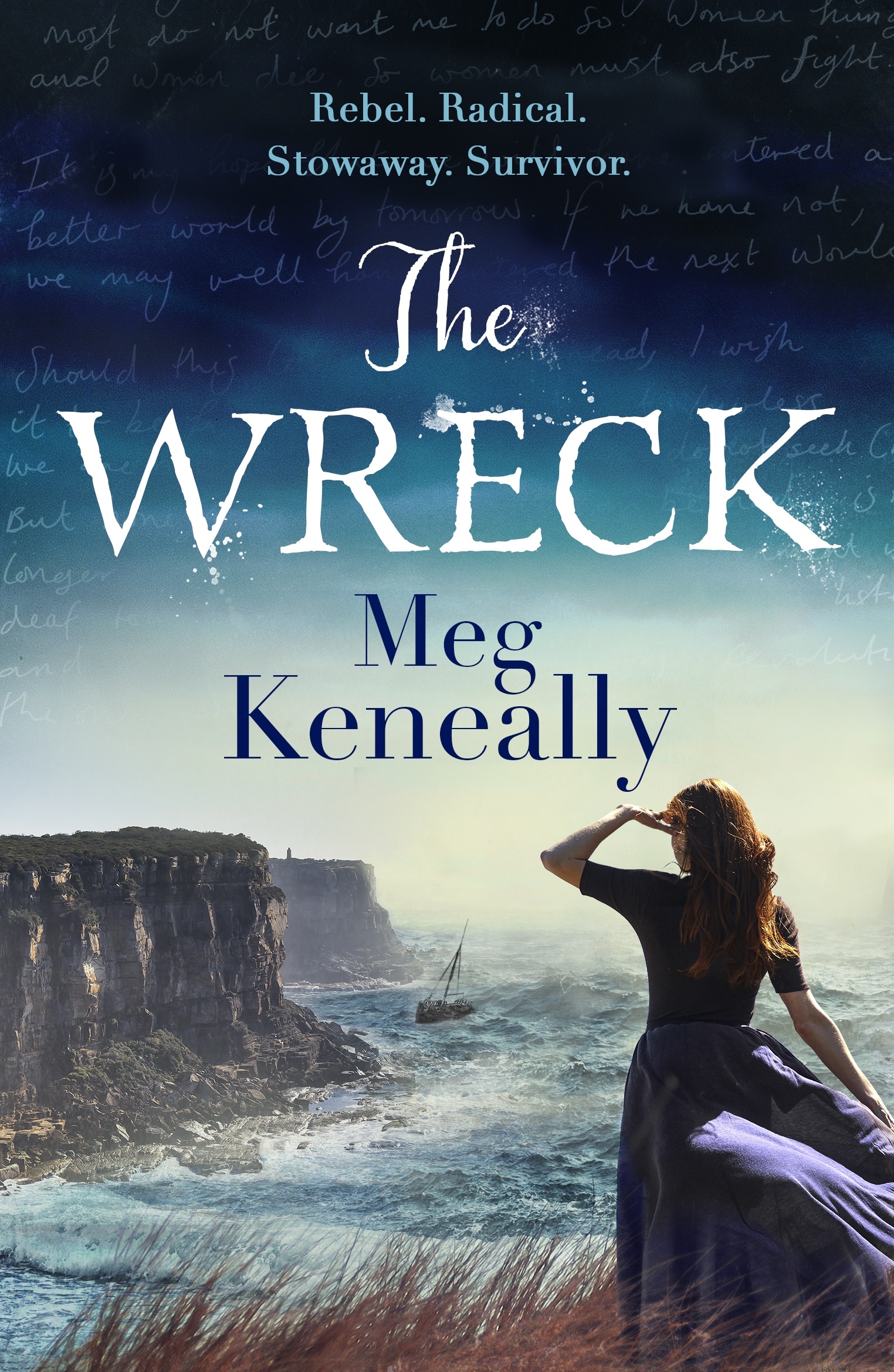MEG KENEALLY, dived into history … literally … as part of the research for her latest historical novel, The Wreck, set in the convict era of colonial Sydney. JENNIFER SOMERVILLE talks with Meg about her father, shipwrecks and her writing.
Finding out at the time of Australia’s Bicentennial in 1988 that her mother had convict ancestors has only deepened Meg Keneally’s interest in Australia’s colonial and convict history.
‘My interest in that era probably comes from my parents’ interest, as I was dragged around convict sites from an early age,’ she said.
Meg co-wrote four books in the ‘Monsarrat’ gentleman convict detective series with her author father, Tom Keneally, then her first historical novel, Fled, before she completed The Wreck, published this year.
So, was being Tom Keneally’s daughter a help or hindrance in her writing career?
‘It’s hard to say because I don’t know what it’s like to be anyone else’s daughter. But it’s overwhelmingly positive because he’s a great dad. It also showed me that mere mortals could write. And of course, I pick his brains at every opportunity,’ she said.
‘It doesn’t necessarily make it easier to get published – I’ve had novels rejected in the past — but certainly I think there’s a level of interest in some quarters as to how I write in comparison to him, and in a very crowded and competitive market, the known surname is certainly an advantage. In the end, though, it all comes down to the writing. If it’s no good the surname doesn’t matter.
‘The main advantage – and this is going to sound cheesy but I mean every word of it – is that I grew up with loving, supportive and encouraging parents in a safe part of the world with enough food and access to education.’
Like her other works, The Wreck is set in the convict era of colonial Australia, specifically Sydney, as well as the England of 1819-20.
‘I’ve always been interested in the idea that coming to New South Wales from England was like going to Mars. It’s an impossible distance away and anyone leaving England knew they would never again see people dear to them,’ said Keneally.
The inspirations for the book were four distinct historic events or people, about which Keneally had been thinking for some years, and eventually she decided to combine all four.
These were: the Peterloo Massacre in 1819, during a peaceful protest in Manchester by thousands of people; the 1820 Cato Street Conspiracy, with radicals in London planning to storm a Cabinet dinner, behead the Cabinet members and form a provisional government; the former convict, Mary Reibey, who became one of the most powerful women in Sydney; and the wreck of the Dunbar, just south of The Gap in Sydney, in the late-850s with just one survivor, still NSW’s greatest maritime disaster.

While Keneally, herself a SCUBA diver and instructor, has dived in the area where the Dunbar broke up and has seen pieces of metal and the odd button, she knows that an earlier diver, John Gillies, found and took home all kinds of artefacts from the scene, bags of which his family eventually gave to the museum.
‘Anything divers find nowadays is given to the museum,’ she said. ‘I’ve seen those Dunbar artefacts at the Maritime Museum and held bolts in my hand that had been concertinaed by the impact of the wreck. It is quite a moving experience to know that 121 people aboard made it all that way from England, only to die within a kilometre of their goal.’
The shipwreck in which Keneally’s main character, Sarah McCaffrey, was the only survivor from the crew, settlers and convicts on board, provided the ideal fictional transitional ‘jolt’ from the old world of social inequality in England to the new world of colonial New South Wales.
And creating the character of Mrs Thistle, benefactor and shrewd businesswoman, inspired by Mary Reibey, was a satisfactory task for Keneally, who had long wanted to write about that former convict who in 1794 had married a businessman who died in 1811, leaving her with seven children. Mary took over the business, expanding it to buy ships, trading successfully and amassing property, becoming one of the richest people in the colony.
The Cato Street conspiracy in London inspired a similar fictional group in this book in which Sarah and her brother, orphaned when their parents were killed during a peaceful gathering in Manchester (shades of Peterloo), were involved.
Sarah escaped when the conspirators were rounded up and found refuge on a ship bound for Australia. Details of the hangings of some of the conspirators, including Sarah’s brother, come from reports of the public executions of the Cato Street conspirators and Keneally has not flinched from the details of the punishment meted out to them.
By weaving Sarah through fictional accounts of those historic events, Keneally has been able to explore what drives a person to political radicalism and extremism. She believes that in modern times Sarah would be called a terrorist.
‘The conditions in Manchester in 1819 were remarkably cruel and people were unbelievably stretched,’ she said.
‘People met to hear an orator and did not expect to be run through by the swords of the Hussars. So there was a lot of anger.
‘The character of Sarah, even in Sydney, thinks there is just the Establishment and the anti-Establishment. At first she sees no shades of grey but eventually realises that nobody is entirely evil.’
Meg Keneally uses the character of Mrs Thistle to explore what female leadership was like in societies that did not welcome it. She is interested in how women navigate that role and come out the other side successfully.
She has always been interested in people who are caught between a couple of worlds, as was the case for the early arrivals in what became Australia.
As for the actual writing process, Meg maintains the speed of completion depends on the nature of the project, but once she gets the writing under way, she aims for 20 000 words a week. She freely admits that the first draft of her work is always a ‘dog’s breakfast’.
She pays tribute to the people who helped her research into maritime history and archaeology for this book, but reserves the highest accolades for book editors, seeing them as unsung heroes who make a huge difference to published works.







